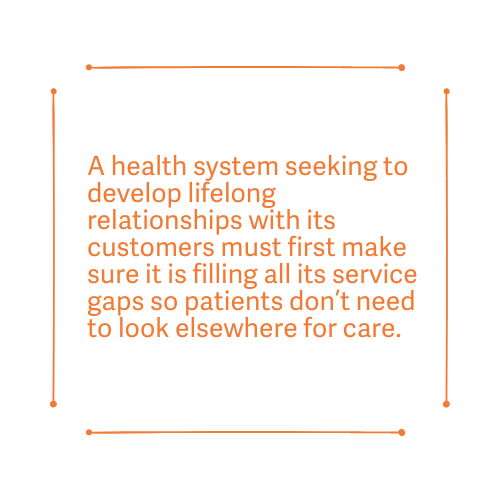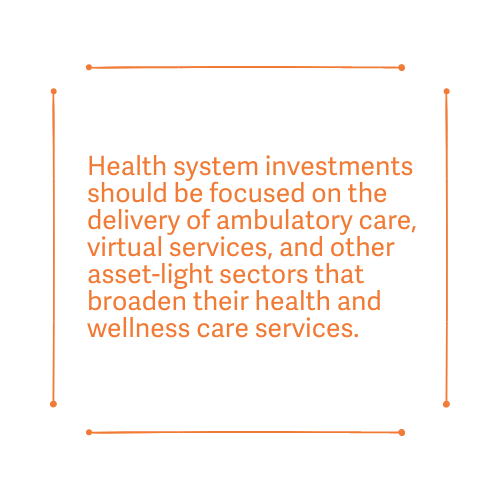
The Biden administration’s Executive Order on Promoting Competition in the American Economy calls for the Department of Justice and Federal Trade Commission to “enforce the antitrust laws vigorously and recognizes that the law allows them to challenge prior bad mergers that past Administrations did not previously challenge.” It notes that “hospital mergers can be harmful to patients and encourages the Justice Department and FTC to review and revise their merger guidelines to ensure patients are not harmed by such mergers.”
Statements like that might hit close to home for some hospital executives. Health systems have been aggregating into regional, superregional, and national systems predicated on a strategy of gaining economies of scale, enhancing services, and improving access. However, in few instances have these systems elevated the performance of their individual hospitals or returned the benefits of scale to consumers in terms of lower costs.
But it doesn’t have to be this way. And health systems—especially very large health systems—are now equipped to transfer the benefits of consolidation to patients, communities, employers, and payers. The question is, will they?
Scale can bring value to health systems and the communities they serve. Scale is needed to achieve a level of market indispensability characterized by an integrated provider network able to invest in data analytics, bear risk, and offer patient-friendly physical and virtual care settings. But size—or, scale—doesn’t guarantee relevance. Bigger doesn’t result in better. Only those health systems that grow by strategically pursuing vertical integration into asset-light delivery mechanisms and ensuring a deliberate and structured approach to achieve system performance will be positioned for clinical and financial success that results in consumer benefit.
Below are three core strategies to pursue to build scale and improve performance.
1. Scale Vertically to Advance Health—and Wellness
Big health systems need to get bigger so they can put big data to big uses. Many of the most useful applications of the data health systems are gathering require a comprehensive network of care. And the more comprehensive the network, the more robust the data. This data can empower health systems to not only understand their patients when they are sick but offer insight into the general well-being of the populations they serve. Vertical integration offers that ability.

Broadening a health system’s perspective of vertical integration allows for management of an even greater portion of a community’s health and well-being. Health systems with a patient-centric focus and a population-based care model will achieve a competitive advantage when applying data. A health system seeking to develop lifelong relationships with its customers must first make sure it is filling all its service gaps so patients don’t need to look elsewhere for care.
So, ensuring a comprehensive healthcare delivery system with superior customer satisfaction and convenient physical and digital touch points is task one. But why stop there?
Rather than limiting the health system to the traditional continuum of care and those services reimbursed by traditional payers, consider moving to a continuum of life where the health system’s role is to partner with customers in achieving and maintaining health and wellness.
New revenue sources with higher margin potential than the health system’s core business become apparent when the health system considers itself part of the $14 billion workplace wellness industry, $30 billion health club industry, and $120 billion wellness real estate industry. This expansion of the scope of services—provided either directly or through affiliations—allows a health system to fortify its relationship with consumers through more consistent contact while achieving profitable growth.

2. Invest in Asset-Light Services
Owning stuff isn’t what it once was. Ten years ago, companies from asset-heavy industries such as energy, mining, manufacturing, and retail were ranked among the 10 largest publicly traded companies. Today’s highly valued firms are asset-light companies—firms in technology and finance. These firms generate revenue while owning relatively few fixed assets; that is, they have a high fixed-asset turnover ratio (revenue divided by net fixed assets). Among the companies with the highest fixed-asset turnover ratios are health insurers.
Asset-heavy businesses have high fixed costs and require consolidation to build market scale and high degrees of efficiency to drive return on assets. In contrast, asset-light businesses have low fixed costs and derive their return on assets from broad, efficient distribution networks and high utilization.
Health systems are burdened by big buildings filled with expensive equipment. Although those big buildings need to be maintained, health system investments should be focused away from bricks and mortar and toward the delivery of ambulatory care, virtual services, and other asset-light sectors that broaden their health and wellness care services.
3. Achieve System Performance
Multiregional and national health systems are working to function more as operating companies and less as holding companies. The challenges are great, and, in many cases, leadership of these health systems should be commended for their progress.
Consider the following five guiding principles when pursuing system performance:
- Don’t look for scale to create performance.Achieve performance and then scale by integrating new organizations and new growth into your high-performing business. Health systems are currently experiencing record-low operating margins and face a growing proportion of care reimbursed below the cost of providing it. Those that cannot enhance the value they provide will fade away or be absorbed into those that can.
- Engage physician leadership to drive systemwide reduction in care variation.The nation’s best-performing hospitals are those with a high degree of physician leadership, where physicians have a strong voice in operations, and administration is seen as an enabler of the improvements physicians seek rather than a barrier. Physicians need to be empowered with timely cost, quality, and outcomes data that can support consensus-building and guide decision-making.
- Optimize centralized shared services.Standard, nonstrategic functions such as revenue cycle, patient contact centers, supply chain, finance, legal, HR, and IT should be managed at a system level. The nuts and bolts of operating the health system must be optimized, and organizations added to the system need to be effectively integrated.
- Establish an effective consolidation strategy.Define the one core objective driving your consolidation strategy, and then measure every opportunity on its support of that objective.
- Align culture, strategy, and brand. System performance is contingent on the system having a unifying culture—not one culture for the hospital, a second culture for the medical group, and separate cultures at different facilities or regions. And this singular culture must complement the system’s branding. When culture, strategy, and brand are aligned, all stakeholders understand the health system’s purpose, and that purpose guides all behaviors, decisions, and interactions.
Is Your Organization positioned for clinical, financial, and patient success?
This blog post is excerpted from part three of our We Believe series, a collection of strategic perspectives on the changing dynamics of the US healthcare system.

